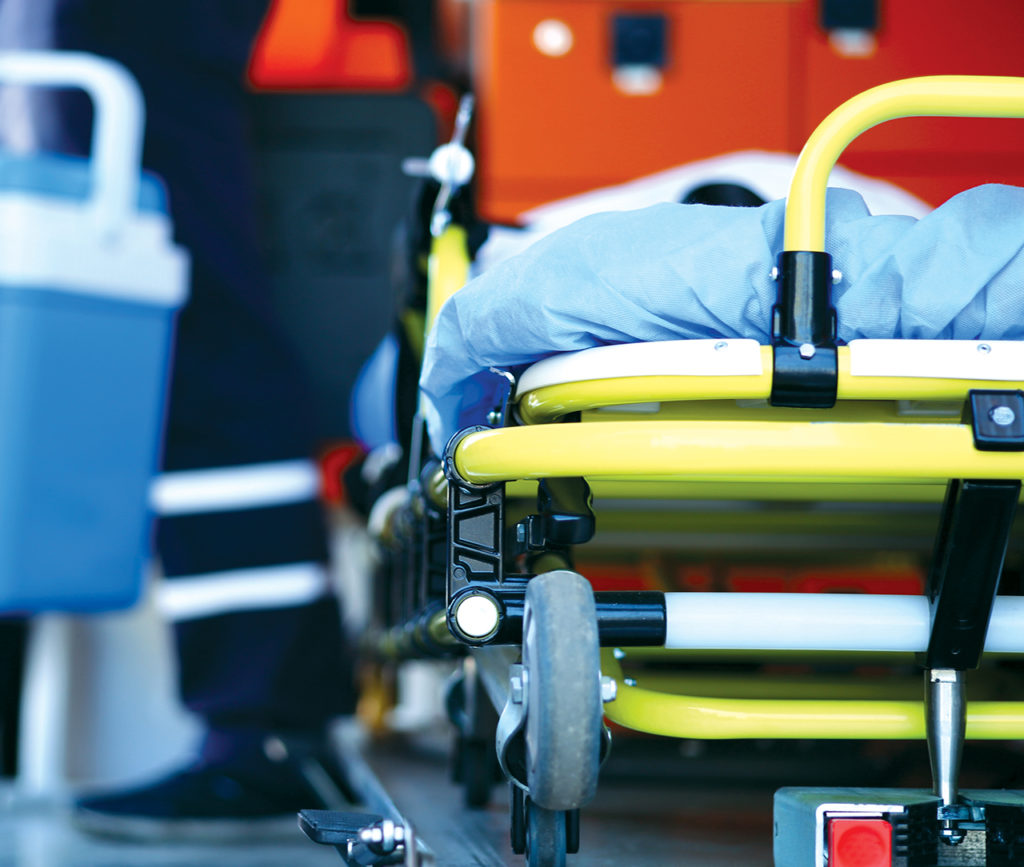About Emergency Preparedness

It’s time to change the way California thinks about disaster response. The COVID-19 pandemic showed that hospitals can quickly mobilize to provide flexible approaches to patient care during a disaster. The state must draw upon these lessons to prepare differently so the next crisis will be less severe. Given California’s size and complexity, the health care disaster response system of the future must be nimble enough to respond to any catastrophe. View more information on hospital disaster preparedness.
Mass Medical Care with Scarce Resources: Planning Toolkit
This toolkit outlines resources and models for meeting the challenges of health care organizations during disaster scenarios. These scenarios often overwhelm hospital resources, necessitating the development of preparedness and response strategies. The guide covers the importance of proactive planning, partnership-building among stakeholders, and development of scalable response plans in hospital disaster planning.
Calculating Daily Needs for N95 Mask Supplies
Hospitals can face significant challenges in managing their N95 mask supplies, especially during public health emergencies. Calculating N95 supply needs is invaluable in ensuring that health care facilities can maintain adequate inventory levels while minimizing waste.
EMTALA Information for Hospitals in a Disaster Setting
Enacted by Congress in 1986, the Emergency Medical Treatment & Labor Act (EMTALA) guarantees public access to emergency services without regard to the ability to pay. Under Section 1867 of the Social Security Act, hospitals participating in Medicare and providing emergency services are mandated to conduct a medical screening examination upon request for evaluation or treatment of an emergency medical condition, including active labor, irrespective of the individual’s financial status.
Sample Visitation Restriction Signage
Posting visitation restriction signage in hospitals is crucial during pandemic events by helping to minimize the spread infection through controlling the number of individuals entering health care facilities.
Pandemic Influenza Planning for Pediatric Patients
Created by experts at Children’s Hospital Los Angeles as a deliverable for the U.S. Department of Health and Human Services Healthcare Facilities Emergency Care Partnership Program Grant, the Information included in this document is based on lessons-learned from the 2009 H1N1 Influenza outbreak. The information is intended to provide supplementary recommendations for pediatric pandemic influenza planning and can be used as an addendum to a larger pandemic planning document.
Toolkit: Doing Business During an Influenza Pandemic
Pandemic planning is crucial to maintain effective hospital operations — from reducing disease transmission among health care workers to cross-training staff, preparation is essential to maintaining critical operations when key personnel are unavailable. Federal agencies have provided guidance for hospitals to prepare for and respond to pandemics; this paper offers actionable steps, templates, and model policies for health care leaders to ensure the safety of their workforce and the continuity of care during health crises.
Planning Guidance for the Handling of Solid Waste Contaminated with Category A Infectious Substances
This guidance was developed as a joint effort by the U.S. Department of Transportation, the U.S. Environmental Protection Agency, the U.S. Department of Labor, the Centers for Disease Control and Prevention, and Assistant Secretary for Preparedness and Response.
CHA Checklist: Seasonal Influenza/Pandemic Preparedness
This checklist contains general recommendations to prompt review and action ahead of seasonal influenza and pandemic. Public health is the lead agency during these events; every effort should be made to remain up to date with rapidly changing local, state, and federal guidance and regulations.
Ventilator Sharing Protocols
Ventilator-sharing protocols are essential for hospital disaster preparedness, especially during emergencies that strain critical care resources. By allowing multiple patients to share one ventilator, hospitals can extend care capacity and manage surges in respiratory support needs. These protocols help prioritize patient care ethically and equitably, maximizing survival rates even when resources are limited. Integrating ventilator-sharing into disaster plans ensures hospitals are better equipped to handle large-scale emergencies.
CHA Checklist: Hospital CEO H1N1 Response Planning
CHA’s Hospital Preparedness Program developed this checklist for hospital CEOs. It serves as a reference to ensure appropriate planning is occurring within hospital and health care organizations.